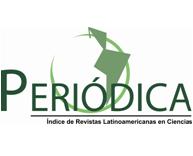PROCESS DESIGN FOR OBTAINING BIOETHANOL FUEL BY ENZYMATIC HYDROLYSIS OF CANE BAGASSE IN THE PASTAZA PROVINCE
Keywords:
cane bagasse, bioethanol fuel, simulation, technological process, SuperPro DesignerAbstract
Introduction:
The shortage of fossil fuels implies the new sources of energy to replace it search. The bagasse generated from sugar cane contains lignocellulosic residues from which fuel bioethanol can be obtained by enzymatic hydrolysis.
Objective:
This work aims to design the process for obtaining fuel bioethanol by enzymatic hydrolysis of sugarcane bagasse using the SuperPro Designer software.
Materials and Methods:
A sequential procedure was used which covers all the aspects that must be considered for the optimal design of an industrial plant. The SuperPro Designer V. 10.0 program was used for the process design and simulation. Continuous operation mode was defined (Annual operation of 7.920 hours, 24 hours in 330 days).
Results and Discussion:
The quantities of cane bagasse with the most profitable economic indicators are 72 t, 90t, 108 t, 126 t, and 144 t of cane bagasse and an internal rate of return between 9.14% for 72 t to 31.33% in 144 t of bagasse. Quantities less than 54 t of sugarcane bagasse report a negative net present value. Therefore, these quantities not generate profitable processes.
Conclusions:
The economic indicators with the highest profitability are between 64 t to 144 t of sugarcane bagasse.
Downloads
Downloads
Published
How to Cite
Issue
Section
License

This work is licensed under a Creative Commons Attribution-NonCommercial 4.0 International License.




















